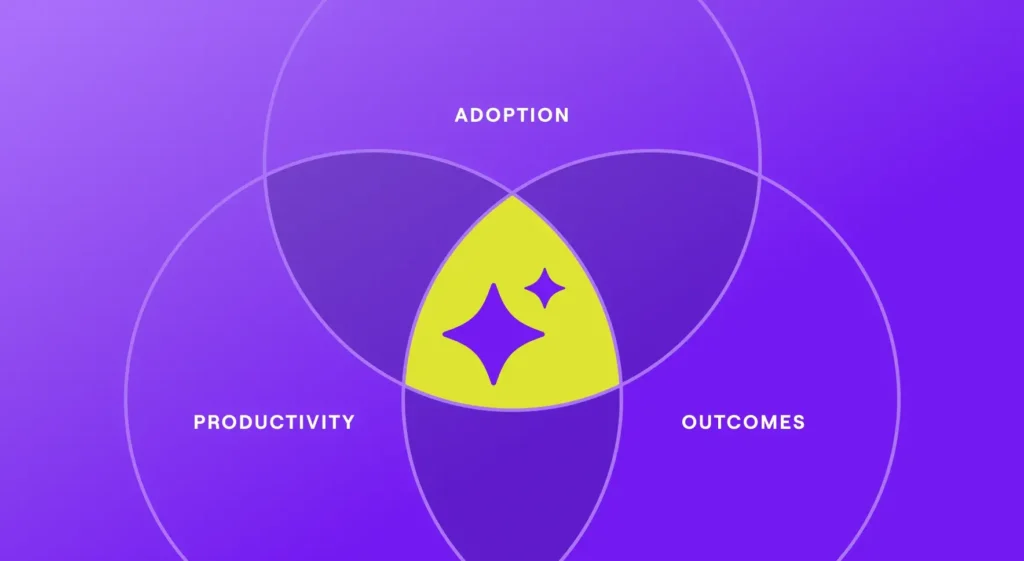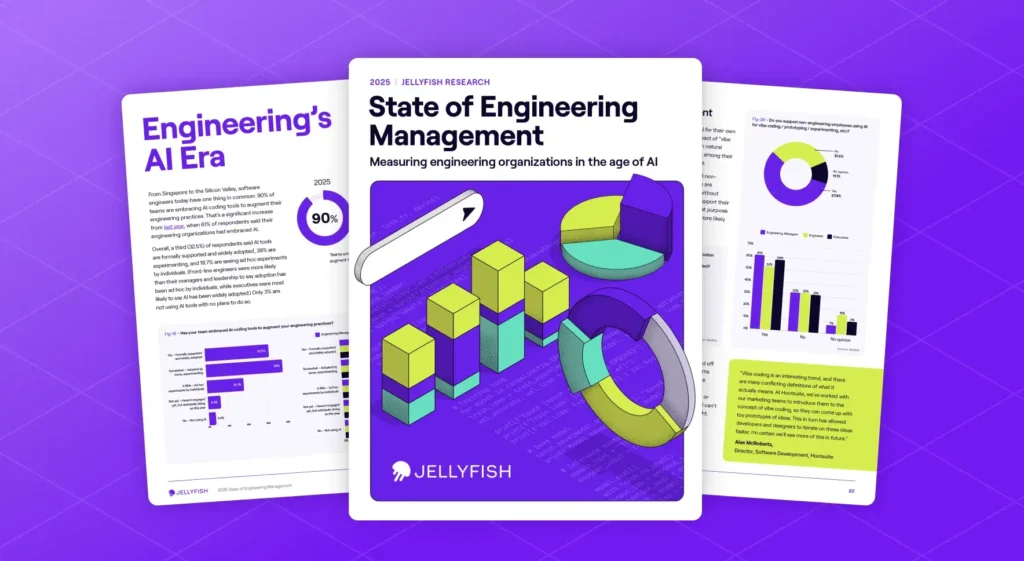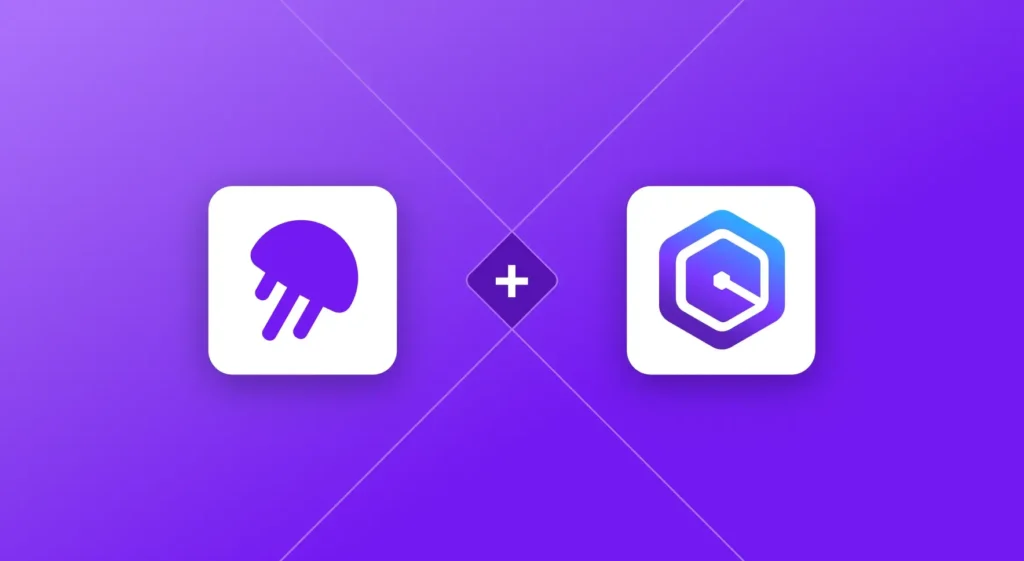What is Developer Experience (DevEx)?
What is Developer Experience (DevEx)?
Developer experience (DevEx) is a multifaceted discipline that encompasses the tools, processes, and culture that shape a developer’s daily work. By prioritizing DevEx, organizations can create a virtuous cycle where happy, productive developers build better software, faster, leading to greater business success and a thriving developer community.
But establishing a positive developer experience is more than just providing engineering teams with the latest tools and technologies. It’s about fostering a holistic environment where developers can thrive and do their best work. It’s the culmination of everything that impacts a developer’s journey from the moment they are onboarded with a new organization.
Core Components of DevEx
- Tools and infrastructure: This includes the IDEs, SDKs, version control systems, CI/CD pipelines, and cloud platforms that developers use daily. It’s about providing powerful, well-integrated tools that automate tasks and streamline workflows. But it’s also about offering choice and flexibility, empowering developers to use the tools they prefer and adapt to their individual workflows.
- Documentation and resources: Clear, concise, and easily accessible documentation is essential for developers to understand APIs, libraries, and frameworks. DevEx champions ensure documentation is up-to-date, provide relevant examples and tutorials, and cater to different learning styles through videos and interactive resources.
- Onboarding and education: Effective onboarding programs and continuous learning opportunities are crucial for developer success. This includes mentorship, peer support, and access to training materials that help developers quickly get up to speed and stay ahead of the curve.
- Team and system processes: Whether it’s how a team prioritizes a chunk of work, how changes get reviewed, or how a diff is deployed to production, the systems and processes in which a team works can have strong positive or negative influence on the experience of developers.
- Developer support: Responsive and effective support channels, such as community forums, chat platforms, and ticketing systems, are vital for addressing developer questions and concerns. Proactive support and a culture of feedback ensure that issues are identified and resolved quickly.
Why is a Good Developer Experience Important?
- Increased productivity: Good DevEx removes friction from the development process, allowing developers to focus on what they do best: writing code. This leads to faster development cycles, quicker time to market, and increased efficiency.
- Improved software quality: When developers have the right tools and environment, they can write higher-quality code with fewer bugs. This translates to better software, happier users, and a stronger reputation for the organization.
- Enhanced developer well-being: A positive DevEx contributes to developer job satisfaction, reduces burnout, and fosters a sense of ownership and pride in their work.
- Business impact: Ultimately, good DevEx is a business enabler. It drives innovation, reduces costs, attracts and retains top talent, and gives organizations a competitive edge in the market.
Who Owns DevEx?
Who Owns DevEx?
While the responsibility for DevEx might be concentrated in a specific role or team in some organizations, it’s ultimately a shared responsibility across the entire engineering organization.
Here’s a breakdown of key players and their roles:
DevEx Team
If your organization has a dedicated developer experience team, they are the primary drivers of DevEx initiatives. They focus on understanding developer needs, identifying pain points, and implementing solutions to improve the overall experience.
Responsibilities include:
- Championing DevEx: Advocating for developer needs and ensuring they are considered in decision-making processes.
- Tooling and infrastructure: Providing and maintaining efficient tools, frameworks, and infrastructure (typically handled by DevOps engineers)
- Documentation and resources: Creating and maintaining clear, concise, and up-to-date documentation.
- Onboarding and education: Developing and delivering onboarding programs and training materials for new developers.
- Community building: Fostering a collaborative and supportive developer community.
- Support and feedback: Providing timely support and gathering feedback from developers.
Engineering Leadership
Engineering leaders play a crucial role in setting the vision for DevEx and prioritizing it as a key objective. They foster a culture that values developer experience, empowers team members to make decisions, and encourages continuous improvement.
They also allocate the necessary resources (budget, personnel, tools) to support DevEx initiatives.
Individual Developers
Developers themselves are responsible for actively participating in feedback loops, sharing their experiences, and contributing to the improvement of the DevEx.
They contribute to a positive DevEx by collaborating effectively, sharing knowledge, and supporting their peers.
Other Developer Advocates
- Product Management: Product managers should consider the impact of product decisions on developer experience and work closely with the DevEx team to ensure alignment.
- Documentation Team: The documentation team should work with dev teams to ensure that the documentation relied on by developers is findable, consistent and up-to-date.
- Security Team: The security team should work with developers to integrate security practices seamlessly into the development process without creating unnecessary friction.
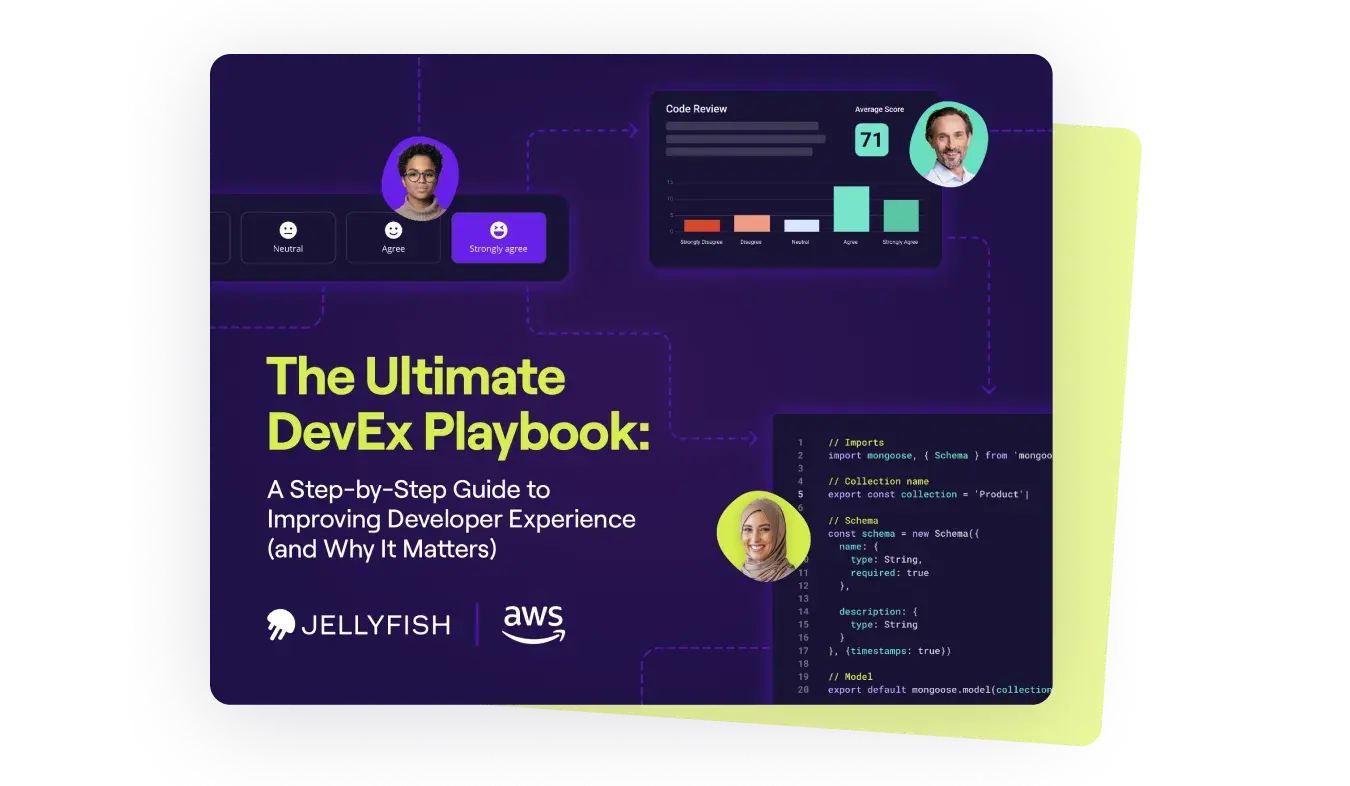
The Ultimate DevEx Playbook
A step-by-step guide to improving developer experience (and why it matters).
Get eBookHow to Create a Great Developer Experience Strategy
How to Create a Great Developer Experience Strategy
Developer experience strategy focuses on the deliberate and systematic approach to improving the overall DevEx within an organization or software ecosystem. It involves understanding the needs (and the pain points) of developers, identifying areas of improvement, and implementing effective measures to enhance their productivity, satisfaction, and success.
A well-crafted DevEx strategy is essential for attracting and retaining talented developers, fostering innovation, and driving the growth of a developer community.
1. Understand Your Developers
- Map their journey: Visualize the complete developer workflow, from initial setup and coding to testing, deployment, and ongoing maintenance. Identify common tasks, dependencies, and potential bottlenecks.
- Gather holistic feedback: Go beyond basic surveys. Conduct detailed interviews with developers across different roles and experience levels to understand their unique needs, challenges, and preferences. Observe them in their work environment if possible.
- Feedback loops: Identify any friction points in receiving feedback on code, builds, or deployments. Strive for tight feedback loops to enable rapid iteration and learning.
- Cognitive load: Pinpoint processes or tools that require excessive mental effort due to complexity, poor design, or lack of clarity. Aim for simplicity and intuitiveness.
- Flow state: Understand what factors disrupt developers’ focus and concentration or force developers to context-switch. Minimize interruptions, provide clear goals, and create an environment that fosters deep work.
2. Implement the BICEPS framework
The “BICEPS” model provides a methodology for creating a successful developer experience strategy. The model emphasizes six key dimensions:
- Belonging:
- Cultivate a strong sense of community through online forums, chat platforms, and shared physical workspaces.
- Encourage knowledge sharing and collaboration through mentorship programs, peer code reviews, and internal documentation contributions.
- Organize hackathons, workshops, and social events to build camaraderie and strengthen team bonds.
- Information:
- Provide comprehensive and easily accessible documentation with code samples, tutorials, FAQs, and API references.
- Ensure documentation is always up-to-date and aligned with the latest versions of your tools and technologies.
- Offer multiple channels for accessing information, such as a dedicated developer portal, a searchable knowledge base, and an interactive API documentation hub.
- Choice:
- Offer a diverse range of tools, frameworks, and technologies that cater to different developer preferences and project requirements.
- Support open-source technologies and ensure seamless integration with popular developer tools and IDEs.
- Empower developers to choose their preferred programming languages, development environments, and workflows.
- Empowerment:
- Give developers autonomy and ownership over their work, allowing them to make key decisions and drive projects forward.
- Encourage experimentation, risk-taking, and learning from failures in a safe and supportive environment.
- Provide opportunities for professional development, skill enhancement, and career growth through training, conferences, and mentorship programs.
- Cultivate a culture of trust and respect where developers feel valued for their contributions and empowered to make an impact.
- Purpose:
- Clearly communicate the organization’s vision, goals, and how developers’ work directly contributes to achieving them.
- Emphasize the positive impact their work has on users, customers, and the world.
- Regularly recognize and celebrate individual and team achievements to reinforce a sense of purpose and accomplishment.
- Foster a sense of pride and ownership in the products and services they create.
- Success:
- Set clear, measurable goals and expectations for developers, providing them with a roadmap for success.
- Provide regular, constructive feedback on their performance, highlighting both strengths and areas for improvement.
- Offer opportunities for career advancement, promotions, and increased responsibility based on their contributions and growth.
- Celebrate individual and team successes through public recognition, rewards, and opportunities to share their achievements.
3. Optimize the Developer Environment
- Streamline workflows: Analyze and optimize key development workflows, eliminating unnecessary steps, automating repetitive tasks, and simplifying complex processes.
- Enhance tools and infrastructure: Provide access to powerful, well-maintained, and user-friendly development tools, IDEs, and infrastructure that support efficient coding, testing, and deployment.
- Prioritize clarity and consistency: Maintain clear, concise, and up-to-date documentation. Enforce coding standards, naming conventions, and design patterns to ensure consistency and readability across projects.
- Foster collaboration and communication: Encourage open communication and knowledge sharing among software engineering teams through collaborative developer platforms, code reviews, and pair programming opportunities.
4. Measure and Iterate
- Track relevant metrics: Monitor key performance indicators (KPIs) related to developer productivity, satisfaction, and well-being, such as time spent on specific tasks, frequency of code deployments, bug rates, and developer satisfaction scores.
- Analyze data: Leverage analytics tools and feedback mechanisms to gather data on developer behavior, preferences, and pain points.
- Continuously improve: Regularly analyze data and feedback to identify areas for improvement and iterate on your DevEx strategy to ensure it remains effective and aligned with developer needs.
5. Embrace Emerging Trends
- AI-powered tools: Explore and adopt AI-powered tools that can automate tasks, provide intelligent assistance, generate code, and enhance developer productivity.
- Shift-left testing: Encourage a culture of early and frequent testing by integrating testing practices throughout the software development lifecycle to identify and address issues early on.
- Inner source: Promote internal collaboration and code reuse by adopting inner source practices, fostering knowledge sharing, and breaking down silos between teams.
- DevSecOps: Prioritize security by integrating security practices and tools throughout the software development process to ensure that applications are secure by design.
The Right Way to Measure Developer Experience
The Right Way to Measure Developer Experience
To effectively measure developer experience, you need to go beyond DORA metrics and consider how different aspects of the software development process contribute to the overall experience. This involves looking at DevEx across three key dimensions:
Feedback Loops
This dimension focuses on how quickly and effectively developers receive feedback on their work. Faster feedback loops enable quicker iteration and learning, leading to increased productivity and satisfaction.
What to measure?
- Perception-based metrics:
- Satisfaction with the speed of automated tests and the clarity of their output.
- Satisfaction with the time it takes to validate a local code change.
- Satisfaction with the time it takes to deploy a change to production.
- Workflow-based metrics:
- Time it takes to generate CI (Continuous Integration) results.
- Code review turnaround time.
- Time it takes to release a change to production.
Cognitive Load
This dimension measures the mental effort required for developers to complete their tasks. High cognitive load can lead to frustration, errors, and burnout.
What to measure?
- Perception-based metrics:
- Perceived complexity of the codebase.
- Ease of debugging production systems.
- Ease of understanding documentation.
- Workflow-based metrics:
- Time it takes to get answers to technical questions.
- Manual steps required to deploy a change.
- Frequency of documentation improvements.
Flow State
This dimension assesses how well developers can achieve a state of deep focus and concentration in their work. A good flow state leads to increased productivity, creativity, and job satisfaction.
What to measure?
- Perception-based metrics:
- Perceived ability to focus and avoid interruptions.
- Satisfaction with the clarity of task or project goals.
- Perceived disruptiveness of being on-call.
- Workflow-based metrics:
- Number of blocks of time without meetings or interruptions.
- Frequency of unplanned tasks or requests.
- Frequency of incidents requiring team attention.
By measuring across these dimensions, you can identify specific areas where the developer experience excels or needs improvement. This allows you to prioritize high-impact changes and avoid wasting time on low-value adjustments.
Make sure you combine both perception-based metrics (gathered through surveys and interviews) and workflow-based metrics (tracked through system data) for a complete picture.
Additionally, you should do the following:
Leverage Developer Experience Surveys
- Use surveys to gather candid feedback on pain points, blockers, and areas for improvement.
- Make informed decisions based on real data rather than assumptions.
Pro tip: While it’s important to ask about satisfaction with tools and processes, it’s important to prioritize areas of dissatisfaction and collect information about the “why?” and “what next?”
Incorporate Quantitative System Data
Go beyond basic activity metrics and focus on data that reflects developer experience, such as:
- Build success rate: A high failure rate indicates problems with the build process or development environment.
- Application performance: Slow or buggy applications can frustrate developers and hinder productivity.
- Deployment frequency: Frequent deployments indicate a streamlined and efficient release process.
- Issue resolution time: Long resolution times suggest problems with support processes or the complexity of the codebase.
- Mean time to recovery (MTTR): How long it takes to recover from failures or incidents.
- Error rates: The frequency of errors in code or applications.
Automate data collection by integrating monitoring and tracking tools into your development systems. Ensure consistency in data collection and reporting across different teams and tools.
Balance Quantitative and Qualitative Data
- Quantitative data provides valuable insights into “what” is happening, but qualitative data helps you understand “why.”
- Use a mix of surveys, interviews, system logs, and performance data to get a complete picture.
- Use quantitative data to identify areas for improvement and qualitative data to understand the impact of those issues on developers and prioritize solutions. For example, if your deployment frequency is low (quantitative data), you can conduct interviews with developers to understand the bottlenecks in the release process (qualitative data).
Building a Positive Developer Experience: Best Practices and Examples
Building a Positive Developer Experience: Best Practices and Examples
Organizations can significantly enhance developer experience by focusing on these key areas:
1. Provide Comprehensive Documentation and Resources
- Clear and up-to-date: Documentation should be easy to navigate, accurate, and aligned with the latest versions of your tools and APIs.
- Tutorials and examples: Practical examples and tutorials help developers quickly understand how to use your tools and frameworks.
- Empowerment through information: Good documentation reduces onboarding time and allows developers to focus on coding rather than troubleshooting.
Example: Stripe is known for its excellent API documentation, which includes clear explanations, code samples in multiple languages, and interactive examples.
2. Integrate Tools and Services for Streamlined Workflows
- Integrated Development Environments (IDEs): Provide or support popular IDEs to enable efficient coding, testing, and debugging.
- CI/CD pipelines: Automate build, test, and deployment processes to reduce manual effort and accelerate release cycles.
- Seamless integrations: Ensure smooth integration between different tools and services to avoid friction and context switching.
Example: GitHub Actions provides a seamless CI/CD experience within the GitHub platform, simplifying workflows for developers.
3. Foster a Collaborative and Supportive Community
- Create forums, chat platforms, or dedicated Slack channels for developers to connect, ask questions, and share knowledge.
- Foster a welcoming and inclusive community where developers feel valued and supported.
- Encourage knowledge sharing, mentorship, and peer learning to promote growth and development.
Example: Stack Overflow is a prime example of a thriving developer community where developers can ask questions, find answers, and learn from each other.
4. Offer Timely and Responsive Support
- Provide dedicated support: Offer resources like live chat, or ticketing systems to address developer issues quickly.
- Prevent frustration: Responsive support helps developers overcome obstacles and maintain productivity.
- Gather feedback: Use support interactions to gather valuable feedback on developer experience and identify areas for improvement.
5. Champion Developer Experience
- Dedicated DevEx Champion: Appoint someone to advocate for developers, identify pain points, and drive improvements.
- Feedback loops: Establish mechanisms for gathering continuous feedback from developers and acting upon it.
- Prioritize and act: Focus on quick wins and visible improvements to build momentum and demonstrate commitment to developer experience.
Example: Google has a dedicated Developer Relations team that focuses on improving the developer experience for those using their platforms and APIs.
Great Developer Experience Starts with Jellyfish
Great Developer Experience Starts with Jellyfish
Jellyfish isn’t just another developer experience platform; it’s a comprehensive solution designed to help you cultivate a world-class engineering organization. By combining developer-reported insights with system metrics, Jellyfish empowers you to move beyond basic performance data and truly understand the factors that drive developer satisfaction, productivity, and retention.
Why Jellyfish Stands Out
- Holistic view: Jellyfish integrates qualitative and quantitative data to provide a complete picture of your development ecosystem, enabling you to identify bottlenecks, measure the impact of process changes, and optimize the ROI of your engineering investments.
- Actionable insights: With tools like sentiment analysis and workflow visualization, Jellyfish helps you pinpoint areas where developers need support and optimization.
- Data-driven culture: Jellyfish enables you to create a data-driven culture where decisions are based on real insights, not assumptions.
Key Functionality of Jellyfish
- Team health monitor: Quantify your internal developer experience, highlighting opportunities to refine workflows, reduce friction, and improve collaboration.
- Unified data platform: Aggregate and analyze data from various sources to gain a holistic view of engineering performance and identify trends.
- Real-time feedback: Enable continuous feedback loops and rapid response to developer needs, fostering a culture of continuous improvement.
- Onboarding accelerator: Streamline onboarding for new engineers, ensuring they quickly become productive and integrated into the team.
Jellyfish provides a unified framework that goes beyond basic metrics, encompassing key dimensions like developer satisfaction, productivity, code quality, and business impact. This ensures that improvements in one area don’t negatively impact others, helping you build a high-performing and fulfilled development team.
With Jellyfish’s comprehensive approach, you can:
- Address systemic blockers and improve developer workflows.
- Track progress over time and measure the impact of your DevEx initiatives.
- Create a work environment that attracts and retains top engineering talent.
- Accelerate innovation and drive business growth.
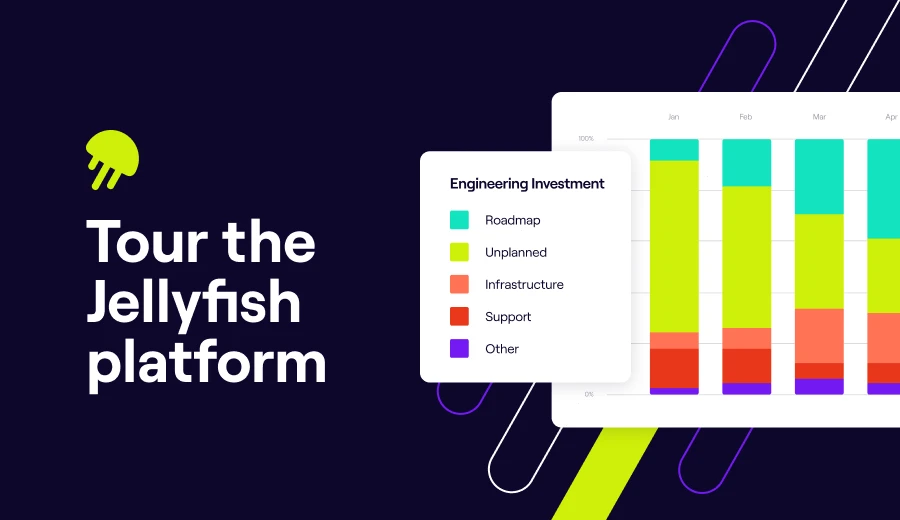
Interested in learning more about Jellyfish DevEx?
See how Jellyfish can help you measure and improve developer experience for your organization.
Tour the ProductAbout the author

Lauren is Senior Product Marketing Director at Jellyfish where she works closely with the product team to bring software engineering intelligence solutions to market. Prior to Jellyfish, Lauren served as Director of Product Marketing at Pluralsight.

